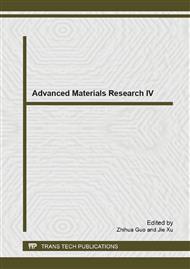p.87
p.95
p.104
p.110
p.116
p.121
p.125
p.129
p.134
The Formation of the Carbon Microcoils without the Catalyst on the Mesh-Type Stainless Steel Substrate
Abstract:
Carbon coils could be synthesized using C2H2/H2 as source gases and SF6 as an incorporated additive gas under the thermal chemical vapor deposition system. The 304 stainless steel plates and the 100 and/or 300-sized stainless steel meshes were used as the substrates. The characteristics of the deposited carbon nanomaterials without the catalyst on the different substrates were investigated according to the injection time of the SF6 flow. In case of the mesh-type stainless steel substrate, the carbon microcoils could be formed without the Ni catalyst. However the plate-type stainless steel substrate could not give rise to the formation of the carbon microcoils without the catalyst, regardless of the injection time of the SF6 flow. The cause for the formation of the carbon microcoils without the catalyst on the mesh-type substrate was discussed in association with the surface energies for the interaction between the as-growing carbon elements and the surface of the substrate.
Info:
Periodical:
Pages:
116-120
Citation:
Online since:
February 2014
Authors:
Price:
Сopyright:
© 2014 Trans Tech Publications Ltd. All Rights Reserved
Share:
Citation:


